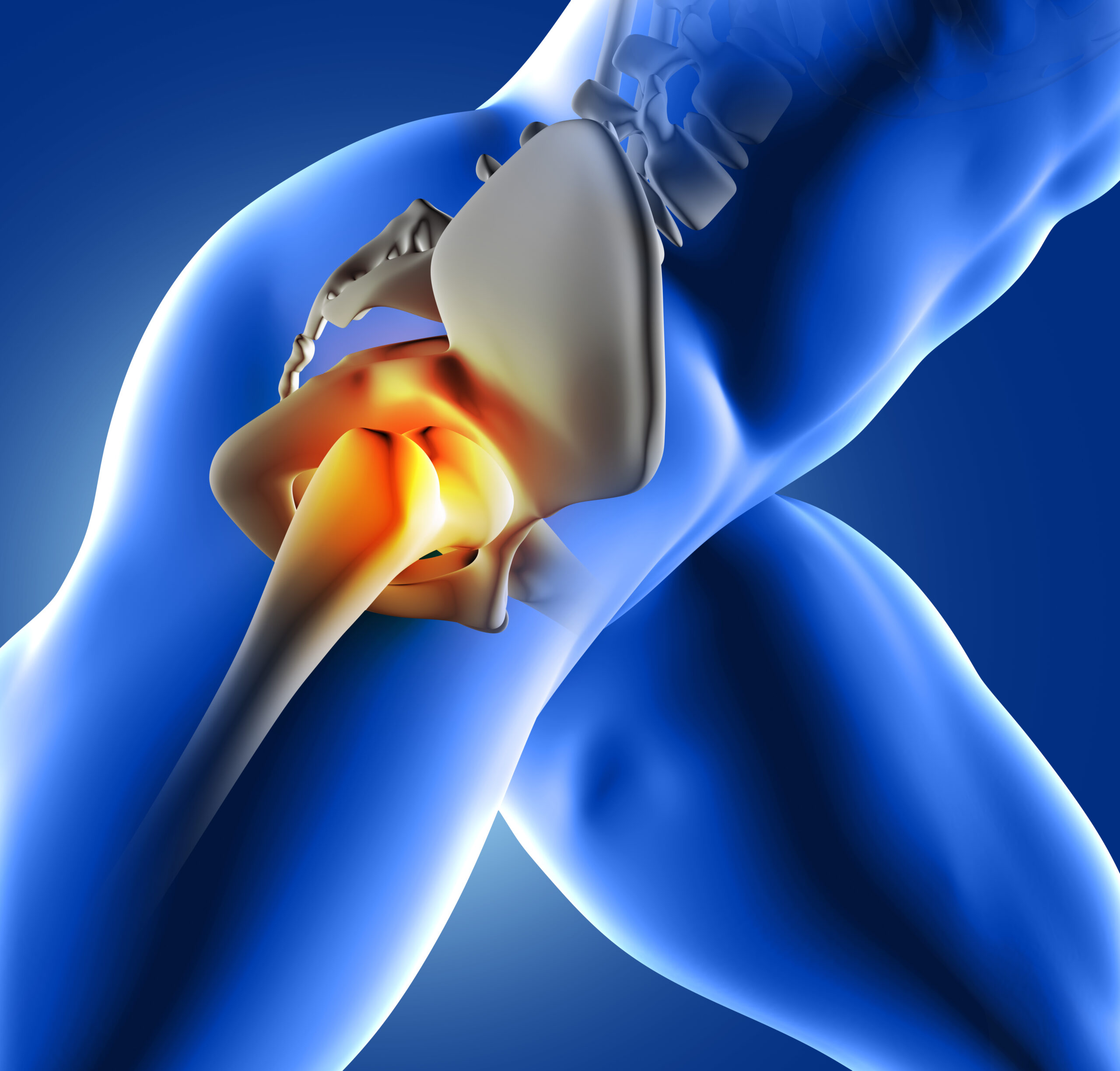Timings
Evercare Hospital Lahore
- Monday - Thursday (11 am - 01 pm)(07 pm - 09 pm)
- Friday (02 pm - 05 pm)(07 pm - 09 pm)
- Saturday (04 pm - 06 pm)
Contact Info
- Phone: 03060603646
- Whatsapp: 03060603646
- Email: Info@drwaqasjavedorthopedics.com
Hip Replacement Surgery

Hip replacement surgery, also known as hip arthroplasty, is a procedure that involves replacing a damaged or worn hip joint with an artificial joint. This surgery aims to relieve pain, improve mobility, and enhance the overall quality of life for patients suffering from various hip conditions.
The importance of hip replacement surgery in orthopedic care cannot be overstated. As our population ages and remains active longer, the demand for this procedure continues to grow. In Pakistan, we’ve seen a significant increase in the number of hip replacements performed annually, reflecting both the rising need and improved access to advanced orthopedic care.
Recent Advancements in Hip Replacement Surgery
The field of orthopedics has witnessed remarkable advancements in hip replacement techniques and technologies in recent years. These innovations have revolutionized the way we approach hip replacement surgery, leading to better outcomes and faster recovery times for our patients.
Minimally Invasive Techniques
One of the most significant advancements is the development of minimally invasive surgical techniques. These approaches involve smaller incisions and less tissue damage, resulting in reduced pain, shorter hospital stays, and quicker recovery times. In Pakistan, we’re seeing a growing adoption of these techniques, particularly in major urban centers like Lahore.
Improved Implant Materials
The materials used in hip implants have also evolved significantly. Today, we use advanced materials such as ceramic-on-ceramic or highly cross-linked polyethylene bearings, which offer improved durability and reduced wear rates. These innovations are particularly beneficial for younger, more active patients who require long-lasting implants.
Computer-Assisted Surgery
Computer-assisted navigation systems have enhanced the precision of hip replacement procedures. These systems allow surgeons to plan and execute the surgery with greater accuracy, ensuring optimal implant positioning and alignment. While not yet widely available in Pakistan, we’re seeing increased adoption of this technology in leading orthopedic centers.
Hip Replacement Surgery in Pakistan:
The prevalence of hip replacement surgery in Pakistan has been steadily increasing over the past decade. According to a study published in the Journal of Pakistan Medical Association, the number of hip replacements performed annually in Pakistan has grown by approximately 15% each year since 2015.
Patient Demographics
The average age of patients undergoing hip replacement surgery in Pakistan is between 60-70 years, although we’re seeing an increasing number of younger patients requiring the procedure due to conditions such as avascular necrosis or hip dysplasia.
Common Conditions Leading to Hip Replacement
The most common conditions leading to hip replacement surgery in Pakistan include:
- Osteoarthritis (accounting for approximately 70% of cases)
- Rheumatoid arthritis
- Hip fractures
- Avascular necrosis
Success Rates
The success rates for hip replacement surgery in Pakistan are encouraging. A study conducted at a major teaching hospital in Lahore reported a 95% patient satisfaction rate five years post-surgery, with significant improvements in pain relief and functional outcomes.
Traditional vs. Advanced Hip Replacement Techniques
When considering hip replacement surgery, it’s important to understand the differences between traditional and advanced techniques.
Traditional Hip Replacement
Traditional hip replacement surgery involves making a large incision (typically 8-10 inches) along the side of the hip. This approach provides excellent visibility and access to the joint but can result in more tissue damage and a longer recovery period.
Advanced Minimally Invasive Techniques
Advanced minimally invasive techniques, such as the anterior approach or mini-posterior approach, use smaller incisions (typically 3-6 inches) and specialized instruments. These techniques offer several advantages:
– Reduced muscle damage
– Less post-operative pain
– Faster recovery and rehabilitation
– Shorter hospital stays
– Lower risk of dislocation
How long is hip replacement surgery? The duration of the procedure can vary depending on the technique used and the complexity of the case. Traditional hip replacement surgery typically takes about 1-2 hours, while minimally invasive procedures may be completed in 60-90 minutes.
Comparing Outcomes
Studies have shown that patients who undergo minimally invasive hip replacement surgery often experience:
– 30-40% faster return to normal activities
– 50% reduction in the use of assistive devices (canes, walkers) during recovery
– Significantly less post-operative pain in the first few weeks
However, it’s important to note that the long-term outcomes of both traditional and minimally invasive techniques are generally comparable when performed by experienced surgeons.
Benefits for Pakistani Patients
The advancements in hip replacement surgery offer numerous benefits for Pakistani patients:
- Improved Quality of Life: Patients report significant pain relief and improved mobility, allowing them to return to activities they enjoy.
- Faster Recovery: With minimally invasive techniques, patients can often start hip replacement surgery exercises within 24 hours of the procedure, accelerating the rehabilitation process.
- Reduced Hospital Stays: Many patients can be discharged within 2-3 days following surgery, compared to 5-7 days with traditional techniques.
- Long-lasting Results: Modern implants have an expected lifespan of 15-20 years or more, reducing the need for revision surgeries.
- Cost-effectiveness: While the initial cost of advanced techniques may be higher, the reduced hospital stay and faster return to work can make them more cost-effective in the long run.
Common Concerns and Misconceptions
Despite the proven benefits of hip replacement surgery, many patients still have concerns. Let’s address some common misconceptions:
Myth: Hip replacement is only for the elderly.
Fact: While hip replacement is more common in older adults, it can be beneficial for younger patients with severe hip problems. The decision is based on pain levels and functional limitations, not age alone.
Myth: Recovery from hip replacement takes many months.
Fact: With modern techniques and rehabilitation protocols, many patients can resume light activities within 3-6 weeks and return to most normal activities within 2-3 months.
Myth: Hip replacements don’t last long.
Fact: Modern implants can last 15-20 years or more. Advances in materials and surgical techniques have significantly improved the longevity of hip replacements.
Myth: Hip replacement surgery is extremely painful.
Fact: While some discomfort is expected, modern pain management techniques make the process much more comfortable than in the past. Many patients report immediate relief from their arthritic pain following surgery.
Dr. Waqas Javed’s Expertise in Hip Replacement Surgery
As a consultant orthopedic surgeon specializing in hip and knee replacements, I have performed over 500 hip replacement surgeries in the past five years. My expertise includes both traditional and minimally invasive techniques, allowing me to tailor the approach to each patient’s specific needs.
I have received specialized training in advanced hip replacement techniques, including the direct anterior approach and computer-assisted navigation. My commitment to staying at the forefront of orthopedic advancements ensures that my patients receive the most up-to-date and effective treatments available.
Patient Success Stories
While maintaining patient confidentiality, I’d like to share a few anonymous success stories:
Case Study 1: A 55-year-old teacher with severe osteoarthritis
Mrs. S had been struggling with hip pain for years, affecting her ability to teach and enjoy daily activities. After undergoing minimally invasive hip replacement surgery, she was able to return to teaching within 8 weeks and now enjoys pain-free walks with her grandchildren.
Case Study 2: A 38-year-old athlete with avascular necrosis
Mr. R, a former cricket player, developed avascular necrosis of the hip joint. Following hip replacement surgery, he has returned to playing recreational sports and coaching youth teams.
These cases illustrate the life-changing potential of hip replacement surgery when performed with precision and care.
Post-operative Care and Rehabilitation
Proper post-operative care and rehabilitation are crucial for optimal recovery after hip replacement surgery. In the Pakistani healthcare context, we’ve developed comprehensive rehabilitation protocols that take into account local resources and cultural considerations.
Key aspects of our post-operative care include:
- Early Mobilization: Patients are encouraged to start moving and walking (with assistance) within 24 hours of surgery.
- Pain Management: We use a multimodal approach to pain management, combining medications with non-pharmacological techniques.
- Physiotherapy: A tailored physiotherapy program begins in the hospital and continues after discharge. Hip replacement surgery exercises are a crucial part of this program.
- Home Care Instructions: Patients receive detailed instructions on wound care, activity restrictions, and signs of potential complications.
- Follow-up Appointments: Regular follow-up visits are scheduled to monitor progress and address any concerns.
- Support Groups: We encourage patients to join local support groups or online communities to share experiences and tips for recovery.
The Future of Hip Replacement Surgery in Pakistan
The future of hip replacement surgery in Pakistan looks promising. We anticipate several developments in the coming years:
- Increased Adoption of Advanced Techniques: As more surgeons receive training in minimally invasive and computer-assisted techniques, these approaches will become more widely available across Pakistan.
- Improved Implant Technology: We expect to see continued advancements in implant materials and designs, leading to even longer-lasting and more natural-feeling artificial joints.
- Enhanced Rehabilitation Protocols: The development of app-based rehabilitation programs and tele-rehabilitation services will improve access to quality post-operative care, especially in rural areas.
- Growth of Orthopedic Centers of Excellence: We anticipate the establishment of more specialized orthopedic centers across Pakistan, improving access to high-quality hip replacement surgery.
- Research and Innovation: Increased collaboration between Pakistani orthopedic surgeons and international researchers will drive innovation and improve patient outcomes.
Find Out Answers Here
If you experience persistent hip pain that interferes with daily activities and doesn’t respond to conservative treatments, you may be a candidate for hip replacement. A thorough evaluation by an orthopedic surgeon is necessary to determine if surgery is appropriate.
Hip joint ball replacement surgery involves replacing the damaged ball (femoral head) of the hip joint with an artificial ball made of metal or ceramic. This is typically done as part of a total hip replacement, which also includes replacing the socket (acetabulum) of the hip joint.
While everyone’s recovery is different, most patients can resume light activities within 3-6 weeks and return to most normal activities within 2-3 months. Full recovery and maximum improvement may take 6-12 months.
Yes, alternatives include physical therapy, weight loss, pain medications, and injections. However, these are typically most effective in the early stages of hip problems. Your orthopedic surgeon can help determine the best treatment approach for your specific condition.
REFERENCES
2. Journal of Pakistan Medical Association. "Outcomes of Total Hip Replacement: A 5-Year Follow-up Study in a Tertiary Care Hospital in Lahore." 2021.
3. International Orthopaedics. "Minimally Invasive Total Hip Arthroplasty: A Systematic Review of the Literature." 2019.
4. The Lancet. "Global, regional, and national incidence, prevalence, and years lived with disability for 354 diseases and injuries for 195 countries and territories, 1990–2017: a systematic analysis for the Global Burden of Disease Study 2017." 2018.
5. Journal of Arthroplasty. "Comparison of Outcomes Between Traditional and Minimally Invasive Total Hip Arthroplasty: A Meta-Analysis." 2020.

Conditions I Treat

- Knee Injuries
- Orthopedic Infections
- PCL Injuries
- Multi-ligament Injuries
- Joint Replacement
- Kneecap Dislocations
- Knee Replacement
- Sport Injuries of Knee
- Lower Limb Fractures
- Hip Injuries
- Hip Replacement
- Back Pain
- Shoulder, Elbow, Wrist
- Upper Limb Fractures
- Neck Pain